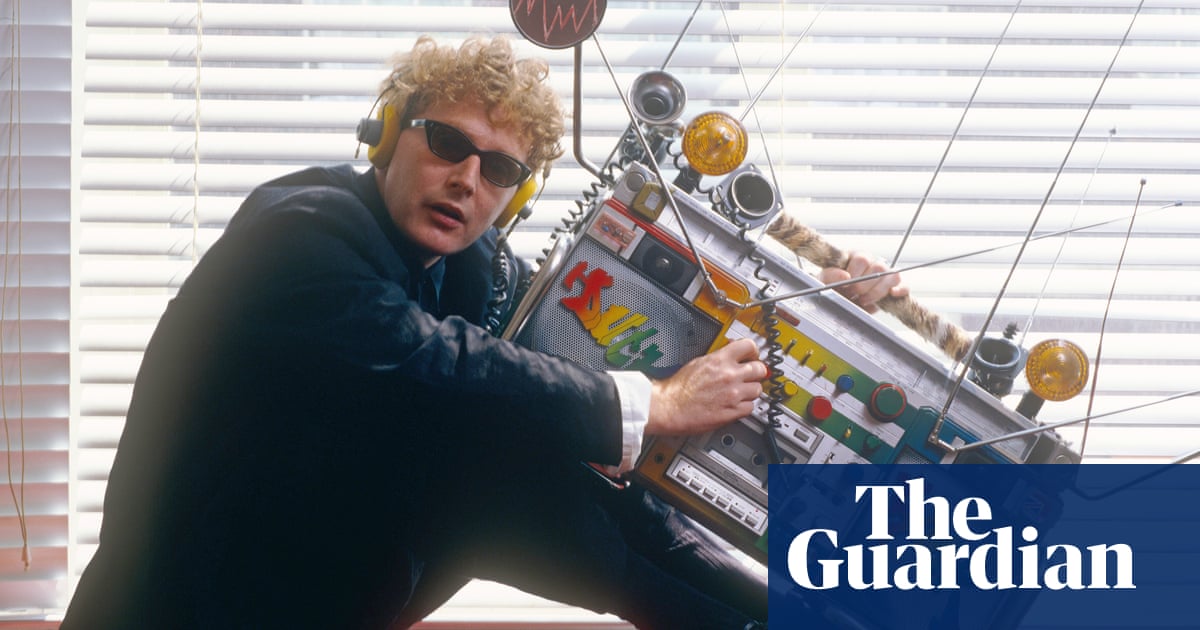
In February 2010, Beyoncé performed in Trinidad, insisted on making an appearance at one of the hottest clubs in Port of Spain (much to the obvious dismay of her bodyguards), and flew home. It was the final stop on her I Am … World Tour. A few months earlier, she had cancelled two subsequent dates without explanation. If she regretted it, it didn’t show.
A year later, in the documentary short Year of 4, she explained her decision. “After I finished the last tour, I was a bit overwhelmed and overworked. And my mother was the person that preached to me, and almost harassed me every day … ‘You really need to live your life and open your eyes, and you don’t want to wake up with no memories.’”
The 28-year-old hadn’t taken more than a couple of months off since her early teens, when her summer holidays were replaced by the “boot camps” that her father Mathew Knowles famously instituted to ready the future members of Destiny’s Child – then called Girls Tyme – for stardom. The proposed solution was a work hiatus, if only one in the Beyoncé sense of the word: she was back in the studio by May 2010, but otherwise spent that year travelling the world, touring cities that she’d only ever seen from the inside of hotel rooms; watching movies, especially documentaries; and attending at least one Rage Against the Machine concert.
When Beyoncé returned to the real world in early 2011, it was with a pair of important announcements. The first was that she was no longer being managed by her father, who had held the position since day one. “I’ve only parted ways with my father on a business level. He is my father for life and I love my dad dearly,” she clarified, although public disputes about the business relationship continued. And it couldn’t have helped that Mathew and Beyoncé’s mother, Tina, were in the midst of a divorce.
In Mathew’s absence, Beyoncé would be taking over as her own manager. During her time off, Parkwood Pictures, the production unit she founded in 2008 to co-produce her film projects, became Parkwood Entertainment, the management company that remains her primary creative hub. Now known for orchestrating some of the most talked-about projects of the 2010s, including Beyoncé’s 2013 surprise self-titled album and 2016’s visual album Lemonade, as well as developing newer acts such as sisters Chloe x Halle, in 2011, it was something closer to an idea, with Beyoncé busy assembling the “team of underdogs” that would accomplish these feats.
The second announcement was that she would be releasing her fourth solo album, aptly titled 4, on 24 June. She had started work on it under a different name, but noticed that fans were calling it 4 online. And, as her favourite number – linked to, among other things, the day of the month on which she, husband Jay-Z, and her mother were born; her 4 April wedding anniversary; and Barack Obama’s status as the United States’ 44th president – the moniker made sense. She described the album as “a gumbo of all of the things I’ve learned from my travels”.
Despite Beyoncé’s newfound freedom, the 4 era was beset by unforeseen challenges. The album was her lowest-selling to date. She also became pregnant between the release of lead single Run the World (Girls) and the album itself, with her first child, Blue Ivy (her name partly a phoneticism of the Roman numeral IV). Yet it has aged as one of the most consequential releases of her career. While people tend to think of her 2013 surprise album as the launch of what we might call Beyoncé 2.0, it was the events of 2011 that laid the ground for what came later. 4 was her last by-the-rules album, when she seemed to realise that the rulebook no longer worked for her.
The album started life as a tribute to Nigerian afrobeat pioneer Fela Kuti. Producer The-Dream said Beyoncé had already recorded 20 songs to that end when she took things in a new direction. As she broadened her reference points, she kept Kuti’s creative approach top of mind, telling Billboard: “What I learned most from Fela was artistic freedom: he just felt the spirit.” (Many critics noted that Beyoncé had positioned herself against the so-called Guetta effect, the chart ubiquity of EDM in the early 2010s.) Zooming out meant that she could tackle her goal to “get R&B back on the radio”. As she later recalled in Life Is But a Dream, the 2013 documentary about the 4 era, “I said, ‘I’m gonna take a risk, and I’m gonna bring R&B music back, and I’m gonna add bridges to songs, and chord changes, and I’m gonna sing about love … I’mma be honest, I’mma be sad, I’mma be passionate, I’mma be vulnerable, I’m gonna sing from my heart, I’m gonna be gravelly, and growl, and scream.’”
Indeed, if Beyoncé’s previous album, 2008’s I Am … Sasha Fierce, had seen her cleave herself in two – appearing as a besotted newlywed on one disc, and a highly stylised cyborg on the other – 4 merged these disparate selves into a single, more chaotic whole. “I killed off needing Sasha Fierce,” she explained in 2011, referring to the long-time alter ego she had originally created to psych herself up for performances. The Beyoncé of 4, which she considered her most personal record yet, was a more nuanced and perhaps hot-blooded rendering of a married woman. In the first three tracks alone, she moves from sex (1+1), to indignation (I Care), and back to yearning (I Miss You). While she hadn’t yet made it public knowledge, she had also recorded the album in the aftermath of a miscarriage, and there were multiple lyrical nods to the fact that she was trying to conceive (Countdown).
She seemed rather uninterested in accommodating preconceptions about who Beyoncé should be, and keen to define her own narrative. Although Run the World (Girls) was a red herring as far as the rest of the album went, she likely chose it to reframe the split from her father as a necessary step on her plan for world domination. Its music video, which drew plenty of Mad Max comparisons, depicted her at the helm of a weaponless, all-female militia going up against an all-male one armed to the teeth. In its final moments, Beyoncé rips a pin off of one soldier’s riot gear as he stares back, bewildered: the allusion to the real-life power transfer couldn’t have been clearer.
While around half of the videos from 4 dabbled in film history (Romy Schneider as she appeared in Henri-Georges Clouzot’s never-finished L’Enfer, Audrey Hepburn in Funny Face, the femme fatale), the others pointedly referenced her past. Party was set in a fashion-forward trailer park, with cameos from little sister Solange and former Destiny’s Child bandmate Kelly Rowland. Love on Top recreated New Edition’s video for If It Isn’t Love, a favourite from Beyoncé’s childhood. Best Thing I Never Had depicted the 1998 prom that she never actually got to attend (the group’s debut album came out that year). Pieced together, these one-offs seemed to gesture towards her sacrificed childhood. “You know it costs to be the boss / One day you’ll run the town,” she reminds herself on Schoolin’ Life.
She was also evidently thinking about her legacy, trying for an heir and seriously reflecting on their inheritance. On the Diane Warren-penned I Was Here, the only track from 4 without a writing credit from Beyoncé, she sings with near-desperation about wanting to leave her mark on the world. For the song’s official live video, filmed during a four-day residency at New York’s Roseland Ballroom in the final days of her 20s, she paired it with three decades’ worth of personal and professional footage.
And it was in 2011 that she began cataloguing every bit of visual material related to her life in what she called her “crazy archive”. A Parkwood Entertainment job posting from 2011 sought “a digital archivist interested in organising and building an archive for a major pop star … starting with approximately 130 TB of footage with an eye to expanding further in the future”. As Amy Wallace wrote in a 2013 GQ profile of Beyoncé: “This digital database, modelled loosely on NBC’s library, is a work in progress – the labelling, date-stamping, and cross-referencing has been under way for two years.”
Rare footage would soon appear everywhere in Beyoncé’s creative projects, grounding several videos from her self-titled album and driving home the autobiography of Lemonade. But the archive doubles as a way to shape the historical record in tangible terms – a valuable resource as a black woman in the public eye whose narrative has at times escaped her grasp: Beyoncé’s desire for more control was probably accelerated by how much of the 4 era was, well, uncontrollable. Bits of the album leaked six weeks early. And while 4 itself debuted at No 1 in the US, it garnered no Top 10 singles there – another career first.
Her pregnancy with Blue Ivy also meant promoting the album through morning sickness and a growing stomach. Her friend Gwyneth Paltrow later let slip that Beyoncé had battled a particularly unpleasant bout of nausea during her Glastonbury headline set in June, and she could no longer hide it by the time of the MTV Video Music Awards in August, where she revealed her pregnancy during a performance of Love on Top. Life Is But a Dream captures the aftermath. “I’m free!” the star exclaims to her team. “We’re all free!”
Things went slightly south again when a rumour gained traction in October that she was pretending to be pregnant in public having privately hired a surrogate. Her rep issued a blunt statement – “Stupid, ridiculous, and false” – that belied the genuine hurt it caused. “Especially after losing a child, the pain and trauma from that,” Beyoncé says in the documentary. “It just seems like people should have boundaries.” The scene pointedly transitions into a live performance of Resentment, from 2006’s B’Day. In hindsight, the rumour – one of many that the star had weathered since her Destiny’s Child days – seems to have been one of the final nails in the coffin for her relationship with the media: if the public lacked boundaries, she would have to construct her own. She has scarcely given interviews since.
Beyoncé had to curtail her ambitions for the 4 era, and got to work on 2013’s self-titled album soon after she gave birth. She took what had worked about 4 – the experimentation, the vulnerability, and the sensuality – and turned it up to 11. The Parkwood infrastructure was now ironclad. Not only were there no leaks; fans only learned of the album’s existence on its surprise release, complete with 17 accompanying videos, on 13 December 2013. Beyoncé saw a career-high sales debut.
Last summer, while reflecting on her success for YouTube’s Dear Class of 2020 event, she described the early days of running her own business as “a pivotal turning point in [her] life” that was equal parts terrifying and rewarding. “Know that stepping out is the best thing you can do for self-discovery,” she advised graduates around the world. “Let that vulnerability motivate you into greatness.”












